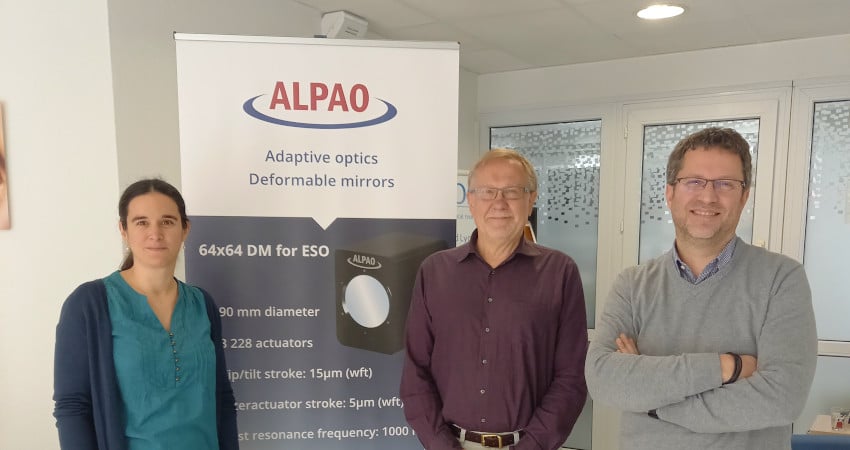In April 2022, ALPAO was delighted to welcome Norbert Hubin and discuss about our present and future projects with European Southern Observatory (ESO). During his visit, he answered some questions about Adaptive Optics technology and applications but also about his long lasting collaboration with ALPAO.
ALPAO – In what context do you use adaptive optics (AO) at ESO ?
Norbert Hubin – We use AO mainly for astronomical applications and in particular on projects such as the Very Large Telescope (VLT, four 8-meter telescopes) and the 39 m Extremely Large Telescope (ELT). AO is particularly important for the interferometric mode at the VLT: with projects like Gravity and Gravity +, MAVIS (a Multi Conjugate Adaptive Optics system in the visible feeding an imager and a 3D spectrograph) and for ELT in projects like MICADO, HARMONI, METIS and MAORY.
What are the major benefits of AO in the astronomic field?
The obvious benefit of AO is to restore the ability of telescopes to provide diffraction-limited images, to improve their sensitivities and thus tackle atmospheric turbulence which significantly degrades images on large telescopes.
What would you like in your dreams as next feature from Adaptive Optics systems?
The dream of every astronomer is to use AO for all wavelengths and even the most challenging wavelengths would be the visible.
So, I would like to provide AO for the visible and also provide AO systems for planet detection on the E-ELT in direct imaging mode.
How do you think that Europe/ESO could help to develop the future challenges of the AO?
Europe and ESO are already working with a number of industries and institutes in Europe to develop the AO systems of the future. Our intention is to continue in this direction via intensive collaborations with European experts!
How long have you been working with ALPAO?
I have been working with ALPAO for almost 15 years, since the beginning with the very first deformable mirror developments with 50 actuator DM.
What advantages do you see in our products and technology in the astronomical field?
ALPAO’s products today provide deformable mirrors that allow us to go to large numbers of actuators with relatively small DM diameter while providing the needed stroke. They are also products that allow us to go relatively fast in terms of correction frequency. And there are improvements in the future in terms of number of actuators that would allow us to move towards AO systems to detect extra-solar planets.
Picture: Marie Laslandes – Product Development Manager @ALPAO | Norbert Hubin – Paranal Instrumentation Programme Engineer, Technology Development Programme Manager, Directorate of Programmes @ESO | Piero Bruno – Sales and Marketing Director @ALPAO
Biography
Norbert Hubin joined ESO in 1990 to develop Adaptive Optics (AO) for the VLT and the VLT Interferometer. He led the AO field at ESO for about 25 years in particular the AO facility project before taking over the Paranal Instrumentation Programme Engineering position in 2014.
Early 2020, he was selected as Programme Manager for the ESO Technology Programme in addition to his role of Programme Engineer for Paranal instrumentation.


